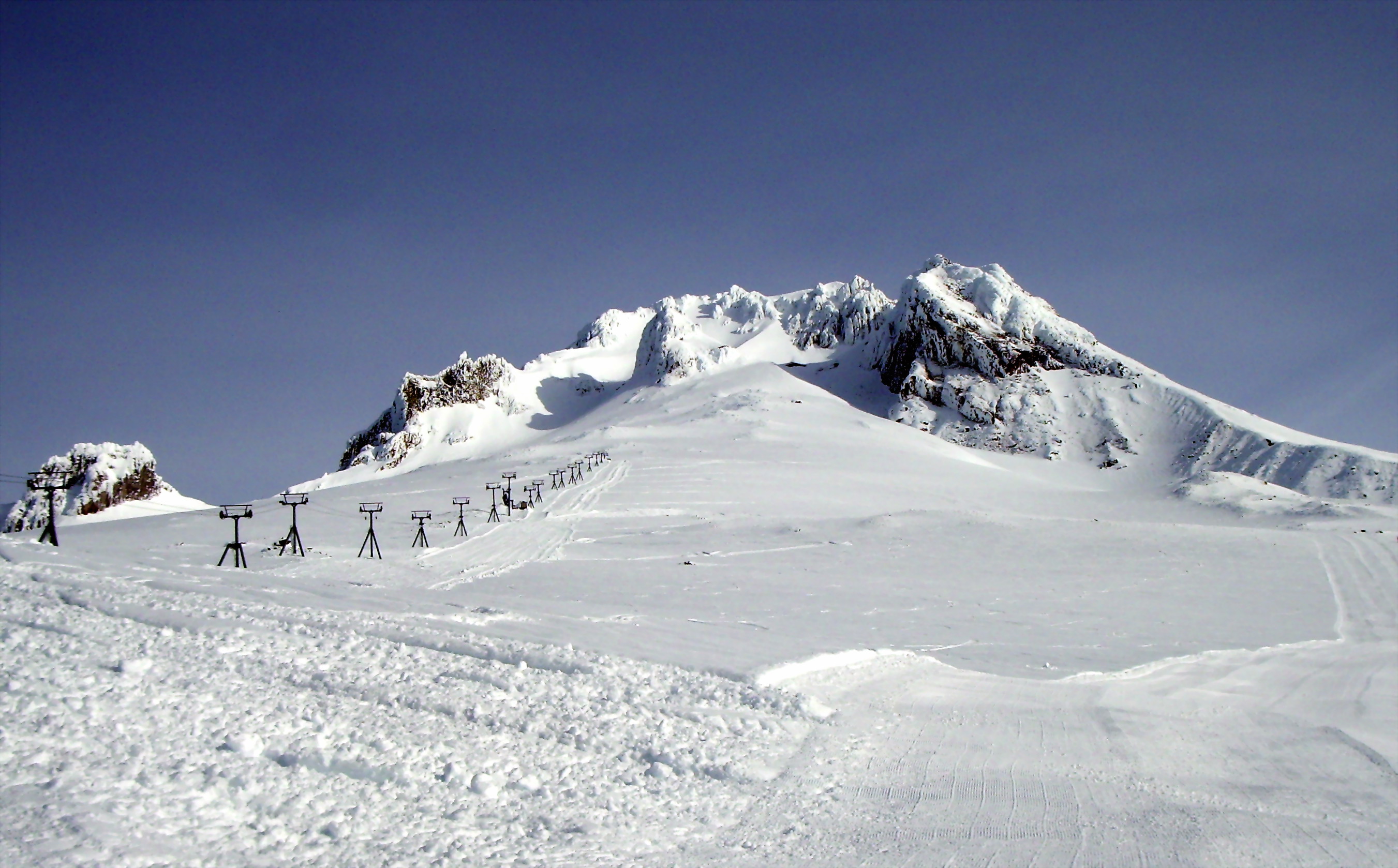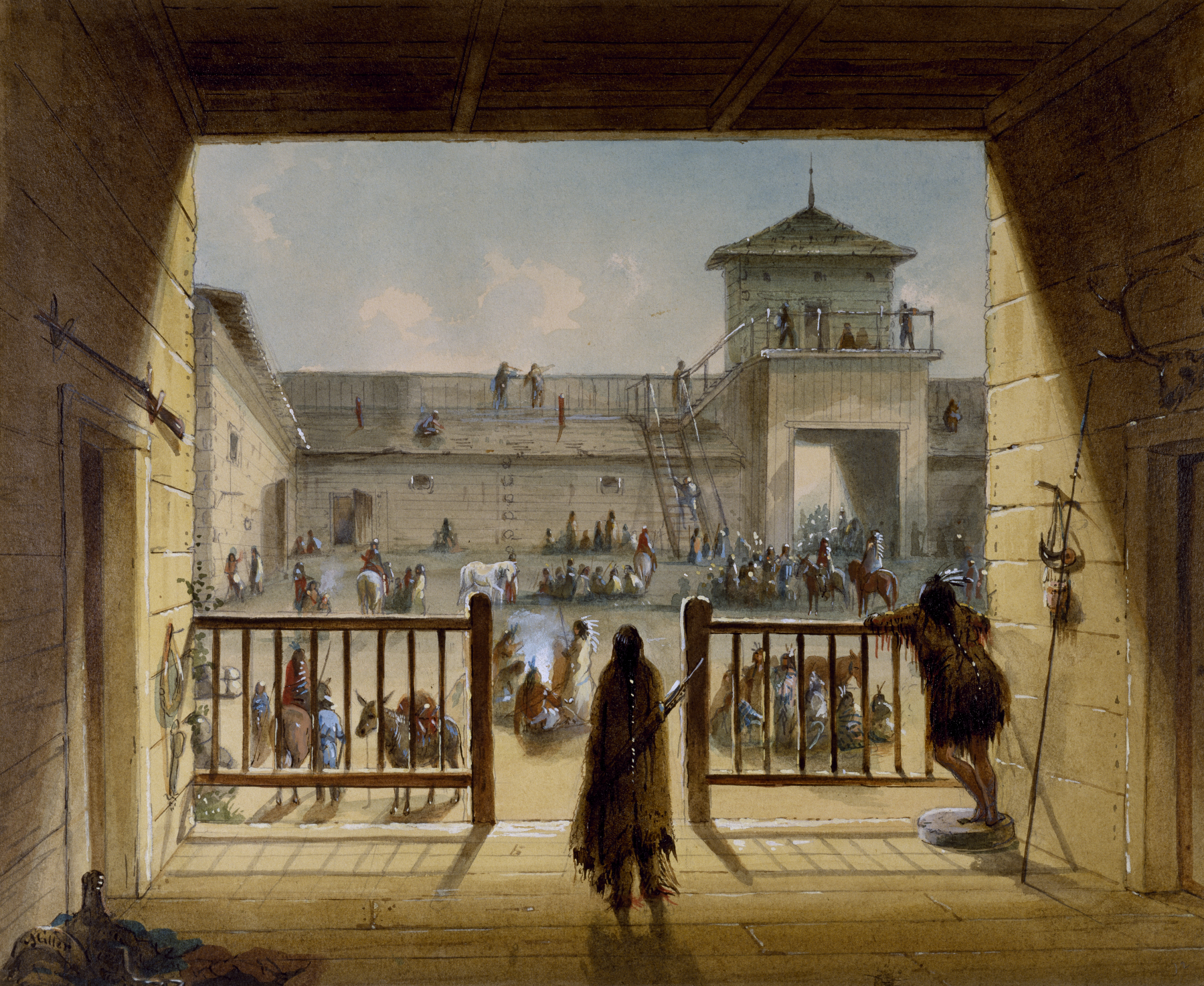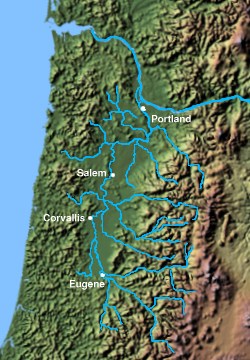|
Stephen Meek
Stephen Hall L. Meek (July 4, 1807 – January 8, 1889) was a Animal trapping, fur trapper and guide in the American Old West, American west, most notably a guide on a large wagon train that used a trail known as the Meek Cutoff. A native of Virginia, both he and his younger brother Joseph Meek would spend their lives as Fur trade, trappers west of the Rocky Mountains. Early years Stephen Meek was born in Washington County, Virginia on July 4, 1807.Corning, Howard M. (1989) ''Dictionary of Oregon History''. Binfords & Mort Publishing. p. 164. In his autobiography, he claims to be a relative of President James K. Polk, and the claim is corroborated by his brother.s:en:Eleven years in the Rocky Mountains and a life on the frontier/Chapter 35, Eleven years in the Rocky Mountains and a life on the frontier, Chapter 35 He was educated in the local public schools in Virginia before beginning work for William Sublette in 1827. He began working as a laborer for Sublette's Rocky Mountain ... [...More Info...] [...Related Items...] OR: [Wikipedia] [Google] [Baidu] |
Washington County, Virginia
Washington County is a county located in the Commonwealth of Virginia. As of the 2020 census, the population was 53,935. Its county seat is Abingdon. Washington County is part of the Kingsport–Bristol–Bristol, TN-VA Metropolitan Statistical Area, which is a component of the Johnson City–Kingsport–Bristol, TN-VA Combined Statistical Area, commonly known as the " Tri-Cities" region. History For thousands of years, indigenous peoples of varying cultures lived in the area. At the time of European encounter, the Chiska had a chief village near what is now Saltville, destroyed by the Spaniards in 1568. The Cherokee annexed the region from the Xualae around 1671, and ceded it to the Virginia Colony in 1770 at the Treaty of Lochaber. The county was formed by Virginians in 1776 from Fincastle County. It was named for George Washington, who was then commander-in-chief of the Continental Army. Washington County is among the first geographical regions to be named after th ... [...More Info...] [...Related Items...] OR: [Wikipedia] [Google] [Baidu] |
Library Of Congress
The Library of Congress (LOC) is the research library that officially serves the United States Congress and is the ''de facto'' national library of the United States. It is the oldest federal cultural institution in the country. The library is housed in three buildings on Capitol Hill in Washington, D.C.; it also maintains a conservation center in Culpeper, Virginia. The library's functions are overseen by the Librarian of Congress, and its buildings are maintained by the Architect of the Capitol. The Library of Congress is one of the largest libraries in the world. Its "collections are universal, not limited by subject, format, or national boundary, and include research materials from all parts of the world and in more than 470 languages." Congress moved to Washington, D.C., in 1800 after holding sessions for eleven years in the temporary national capitals in New York City and Philadelphia. In both cities, members of the U.S. Congress had access to the sizable collection ... [...More Info...] [...Related Items...] OR: [Wikipedia] [Google] [Baidu] |
Sam Barlow (Oregon Pioneer)
Samuel Kimbrough Barlow (December 7, 1795 – July 14, 1867) was a pioneer in the area that became the U.S. state of Oregon, and was key in establishing the Barlow Road, the most widely chosen final segment to the Oregon Trail. Biography Barlow was the son of William Henry Harrison Barlow and Sarah Kimbrough, born in Nicholas County, Kentucky.* Barlow, William (1912)Reminiscences of seventy years '' Oregon Historical Quarterly''. He trained as a tailor, and in 1818 moved to Bloomington, Indiana, where he married and started a family, perhaps in 1822. He and his wife, Susannah Lee, had six children: Sarah, James, John, Eliza Jane, Eli, and William. Barlow was convicted of manslaughter in August 1827, for killing George Matlock with an ax on October 16, 1826. He was sentenced to one year of hard labor. Scores of people, including the victim's brother, pleaded for Barlow's pardon and quashing of his sentence since he did it to prevent harm to his wife and children. Indiana G ... [...More Info...] [...Related Items...] OR: [Wikipedia] [Google] [Baidu] |
Joel Palmer
General Joel Palmer (October 4, 1810 – June 9, 1881) was an American pioneer of the Oregon Territory in the Pacific Northwest region of North America. He was born in Canada, and spent his early years in New York and Pennsylvania before serving as a member of the Indiana House of Representatives. Palmer traveled to the Oregon Country in 1845. He played a central role in blazing the last leg of the Oregon Trail, the Barlow Road, with Sam Barlow and others. Specifically, Palmer is noted for having climbed high on Mount Hood to observe the surrounding area when the party ran into difficulty. He wrote a popular immigrant guidebook, co-founded Dayton, Oregon, and served as a controversial Indian Affairs administrator. After Oregon became a state, Palmer served in both branches of the Oregon Legislative Assembly. He was selected as Speaker of the Oregon House of Representatives for one session in 1862, and in 1870 lost a bid to become Governor of Oregon. The Palmer House, his former ... [...More Info...] [...Related Items...] OR: [Wikipedia] [Google] [Baidu] |
Fort Hall
Fort Hall was a fort in the western United States that was built in 1834 as a fur trading post by Nathaniel Jarvis Wyeth. It was located on the Snake River in the eastern Oregon Country, now part of present-day Bannock County in southeastern Idaho. Wyeth was an inventor and businessman from Boston, Massachusetts, who also founded a post at Fort William, in present-day Portland, Oregon, as part of a plan for a new trading and fisheries company. Unable to compete with the powerful British Hudson's Bay Company, based at Fort Vancouver, in 1837 Wyeth sold both posts to it. Great Britain and the United States both operated in the Oregon Country in these years. After being included in United States territory in 1846 upon settlement of the northern boundary with Canada, Fort Hall developed as an important station for emigrants through the 1850s on the Oregon Trail; it was located at the end of the common stretch from the East shared by the three far west emigrant trails. Soon after ... [...More Info...] [...Related Items...] OR: [Wikipedia] [Google] [Baidu] |
Oregon Trail
The Oregon Trail was a east–west, large-wheeled wagon route and Westward Expansion Trails, emigrant trail in the United States that connected the Missouri River to valleys in Oregon. The eastern part of the Oregon Trail spanned part of what is now the state of Kansas and nearly all of what are now the states of Nebraska and Wyoming. The western half of the trail spanned most of the current states of Idaho and Oregon. The Oregon Trail was laid by fur traders and trappers from about 1811 to 1840 and was only passable on foot or on horseback. By 1836, when the first migrant wagon train was organized in Independence, Missouri, a wagon trail had been cleared to Fort Hall, Idaho. Wagon trails were cleared increasingly farther west and eventually reached all the way to the Willamette Valley in Oregon, at which point what came to be called the Oregon Trail was complete, even as almost annual improvements were made in the form of bridges, cutoffs, ferries, and roads, which made the t ... [...More Info...] [...Related Items...] OR: [Wikipedia] [Google] [Baidu] |
Fort Laramie
Fort Laramie (founded as Fort William and known for a while as Fort John) was a significant 19th-century trading-post, diplomatic site, and military installation located at the confluence of the Laramie and the North Platte rivers. They joined in the upper Platte River Valley in the eastern part of the present-day U.S. state of Wyoming. The fort was founded as a private trading-post in the 1830s to service the overland fur-trade; in 1849, it was purchased by the United States Army. The site was located east of the long climb leading to the best and lowest crossing-point over the Rocky Mountains at South Pass and became a popular stopping-point for migrants on the Oregon Trail. Along with Bent's Fort on the Arkansas River, the trading post and its supporting industries and businesses were the most significant economic hub of commerce in the region. Fort William was founded by William Sublette and his partner Robert Campbell in 1834. In the spring of 1835, Sublette sold th ... [...More Info...] [...Related Items...] OR: [Wikipedia] [Google] [Baidu] |
Willamette Valley
The Willamette Valley ( ) is a long valley in Oregon, in the Pacific Northwest region of the United States. The Willamette River flows the entire length of the valley and is surrounded by mountains on three sides: the Cascade Range to the east, the Oregon Coast Range to the west, and the Calapooya Mountains to the south. The valley is synonymous with the cultural and political heart of Oregon and is home to approximately 70 percent of its population including the five largest cities in the state: Portland, Eugene, Salem, Gresham, and Hillsboro. The valley's numerous waterways, particularly the Willamette River, are vital to the economy of Oregon, as they continuously deposit highly fertile alluvial soils across its broad, flat plain. A massively productive agricultural area, the valley was widely publicized in the 1820s as a "promised land of flowing milk and honey." Throughout the 19th century, it was the destination of choice for the oxen-drawn wagon trains of emigr ... [...More Info...] [...Related Items...] OR: [Wikipedia] [Google] [Baidu] |
Settler
A settler is a person who has human migration, migrated to an area and established a permanent residence there, often to colonize the area. A settler who migrates to an area previously uninhabited or sparsely inhabited may be described as a pioneer. Settlers are generally from a Sedentism, sedentary culture, as opposed to nomads, nomadic peoples who may move settlements seasonally, within traditional territories. Settlement sometimes relies on dispossession of already established populations within the contested area, and can be a very violent process. Sometimes settlers are backed by governments or large countries. Settlements can prevent native people from continuing their work. Historical usage One can witness how settlers very often occupied land previously residents to long-established peoples, designated as Indigenous peoples, Indigenous (also called "natives", "Aborigines" or, in the Americas, "Indians"). The process by which Indigenous territories are settled by ... [...More Info...] [...Related Items...] OR: [Wikipedia] [Google] [Baidu] |
Oregon City, Oregon
) , image_skyline = McLoughlin House.jpg , imagesize = , image_caption = The McLoughlin House, est. 1845 , image_flag = , image_seal = Oregon City seal.png , image_map = Clackamas_County_Oregon_Incorporated_and_Unincorporated_areas_Oregon_City_Highlighted.svg , mapsize = 250px , map_caption = Location in Oregon , image_map1 = , mapsize1 = , map_caption1 = , pushpin_map = Oregon#USA , pushpin_map_alt = , pushpin_map_caption = , pushpin_label = Oregon City , subdivision_type = Country , subdivision_type1 = State , subdivision_type2 = County , subdivision_name = United States , subdivision_name1 = Oregon , subdivision_name2 = Clackamas , government_type = , leader_title = Mayor , leader_name ... [...More Info...] [...Related Items...] OR: [Wikipedia] [Google] [Baidu] |
Thomas McKay (fur Trader)
Thomas McKay (1796–1849) was an Anglo-Métis Canada, Canadian Fur trader who worked mainly in the Pacific Northwest for the Pacific Fur Company (PFC), the North West Company (NWC), and the Hudson's Bay Company (HBC). He was a fur brigade leader and explorer of the Columbia District and later became a United States, U.S. citizen and an early settler of Oregon. Family Thomas was born at Sault Ste. Marie, Ontario, in 1796 His father was the fur trader Alexander MacKay (fur trader), Alexander MacKay. His mother, from a marriage 'à la façon du pays' (in the style of the country), was a Métis people (Canada), Métis woman named Marguerite Wadin, online aGoogle Books/ref> the daughter of a Cree woman online aGoogle Books/ref> and Swiss fur-trader Jean-Étienne Waddens, Jean Etienne Wadin. online aGoogle Books/ref> Wives and children Thomas McKay had at least three wives during his life. His first wife was Timmee T'Ikul Tchinouk, a Chinookan, Chinook woman, daughter of Chief Co ... [...More Info...] [...Related Items...] OR: [Wikipedia] [Google] [Baidu] |
John McLoughlin
John McLoughlin, baptized Jean-Baptiste McLoughlin, (October 19, 1784 – September 3, 1857) was a French-Canadian, later American, Chief Factor and Superintendent of the Columbia District of the Hudson's Bay Company at Fort Vancouver from 1824 to 1845. He was later known as the "Father of Oregon" for his role in assisting the American cause in the Oregon Country. In the late 1840s, his general store in Oregon City was famous as the last stop on the Oregon Trail. Early days McLoughlin was born in October 1784 in Rivière-du-Loup, Quebec, and was of Scottish and French Canadian descent. He lived with his great uncle, Colonel William Fraser, for a while as a child. Though baptized Roman Catholic, he was raised Anglican. In his later life, he returned to the Roman Catholic faith. In 1798, he began to study medicine under Sir James Fisher of Quebec. McLoughlin was granted a license to practice medicine in Lower Canada (now Quebec) in 1803. He evidently completed his course, ... [...More Info...] [...Related Items...] OR: [Wikipedia] [Google] [Baidu] |







